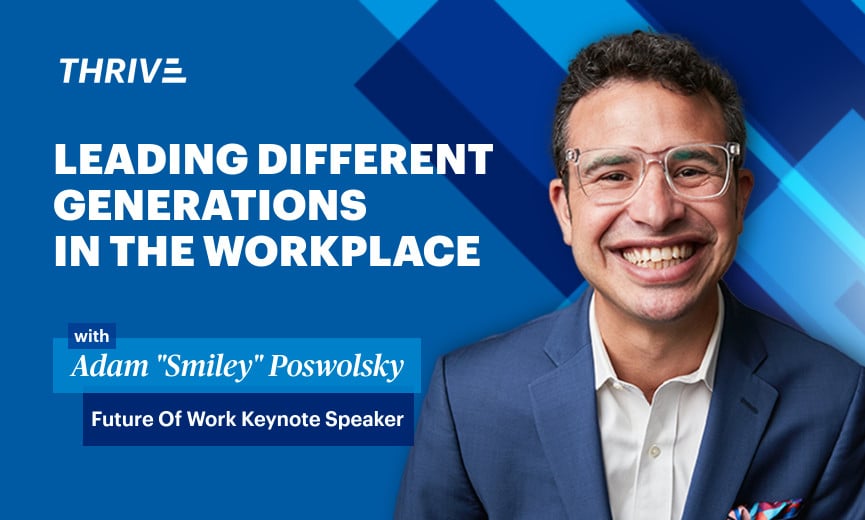- Thrive
-
Season
5Episode37
Interest Rate Holds, Big Companies Shed Workers, Get a Succession Plan
Podcast •
Watch
Summary
Small business owners looking for better interest rates must wait a little longer as the Federal Reserve holds on cutting the key bank rate. The Fed did hint at two potential cuts in 2025. Also mixing the bad with the good is the fact that large companies are projected to cut white-collar workers, but this could give small businesses a larger talent pool to select from in hopes of easing the labor challenges. Gene Marks also shares study findings that show that only 54% of small business owners have a succession plan, so he encourages to develop one and take advantage of glut of Millennials and Gen Zers who want to buy an existing business.
View Transcript
Hey, everybody, it's Gene Marks, and welcome back to another episode of the Paychex THRIVE Week in Review podcast. This is where we take some of the interesting stories during the week that impacts your business and my business, and we talk a little bit about them. So, let's get right to the news.
The first bit of news comes from CNBC, and it's about the Federal Reserve. The Federal Reserve has held its key rate – its key bank lending rate – steady, although it still sees two more rate cuts this year, per CNBC.
The Federal Reserve on Wednesday kept interest rates steady and made expectations of higher inflation and lower economic growth ahead and still pointed, though, to two reductions later this year. With markets expecting no chance of a central bank move this week, the Fed Open Market Committee kept its key borrowing weight targeted in a range between 4.25 and 4.5 percent, where it's been since December.
The plot indicated uncertainty from Fed officials about the future of rates since seven of the 19 participants of the Federal Open Reserve Committee indicated they wanted no cuts this year up from four in March. However, the committee approved their policy statement unanimously.
So, what does this mean for you and I running small businesses? Well, this is the rate that the Fed charges banks and then banks turn around and charge businesses what they charge to make their profits. Right now, the average prime rate around the country is 7.55.
Now, if you're getting 7.5%, good for you. Most of my clients are getting or paying one, two, three points above that. So, they could be paying 8.5, 9, even 10% interest for their loads. So, the cost of borrowing still remains relatively high. It doesn't mean that it should preclude borrowing. It's just that you really have to sharpen your pencil and do your return on investment calculations that much more carefully.
The good news is, is that the Fed is considering perhaps one or two drops between now and the end of the year. So, that hopefully will positively impact our borrowing rate. So, if you are looking for financing or to do deals, it might be who you wait a little bit or to do a financing deal where you can renegotiate interest rates to something lower if those interest rates do fall down.
And one final thing on interest rates, if you're looking to get loans, I'm telling my clients the best place to go is the Small Business Administration. You want to work with an SBA certified bank – a bank that is in their lending network. They will give you very marketable rates, good terms, up to $5 million in loans depending on the program that you want, and because it's guaranteed by the federal government the process and the chance of approval of those loans is much higher.
So, interest rates staying where they are for now; maybe they will come down a little bit between now and the end of the year. Don't count on it. Be very, very careful when you're doing your financing decisions right now and try and keep all of your options open.
The next bit of news is an article in the Wall Street Journal this week entitled the biggest companies across America are cutting their workforces. According to the Journal, Corporate America is convinced fewer employees means faster growth. U.S. public companies have reduced their white-collar workforces by a collective 3.5% over the past three years, according to employment data that is provided to the Wall Street Journal from live data technologies.
Over the past decade, one in five companies in the Standard & Poor 500 have shrunk. The cuts go beyond typical cost trimming and speak to a broader shift in philosophy. Adding talent, once a sign of surging sales and confidence in the future, now means leaders must be doing something wrong. New technologies like generative artificial intelligence are allowing companies to do more with less.
But there's more to this movement. From Amazon in Seattle to Bank of America in Charlotte and the companies big and small everywhere in between there's a growing belief that having too many employees is itself an impediment. The message for many bosses – anyone still in the payroll could be working harder. So, this has implications throughout and let me explain.
First of all, a lot of companies are reducing their workforce, particularly among white-collar employees. Microsoft also announced this past week significant layoffs particularly among white-collar and sales and admin employees. So, if you are an employee of a large company, you want to be careful. A lot of these things are being propelled, or fueled by technology, particularly artificial intelligence.
As artificial intelligence technologies become better and better, yeah, they're going to make people more productive, and more things will be able to get done with less people. My advice to anybody working at a large company is get familiar with these:
- Push for training
- Become expert in some of these AI tools
- Be as productive as possible
The more productive you are, the more profitable you are for your employer. And the more profitable you are, the more chance that you have of staying employed with your company for the long term.
As for small businesses, there are two impacts. Laying off employees is not great for a local economy. Those employees at large companies spend money at pizza shops and dry cleaners and restaurants in their neighborhoods. When they don't have jobs, they don't spend money, and that is a potential problem for local small businesses. So, you want to be aware of that.
On the upside, corporations laying off employees means there's more talent available in the labor pool. There are a lot of really, really good people that might be losing their jobs only because of technology, but that means there's an opportunity to snap up some good talent as they become available in the workforce. And we all know that the labor market has been extremely tight over the past decade.
So, more companies, more big companies are laying off people. There's pros and cons for those workers and there's pros and cons for small businesses that are impacted by them. So, keep close attention to that story.
My final story this week comes from U.S. Bank, a new survey that they found. So, let me read out some of this. This survey is called the Small Business Perspective Survey, and it found that “more than one-third of Gen Z and Millennial business owners plan to acquire a business from a retiring owner. With more than half of U.S. small business owners now over age 55, succession planning is becoming increasingly urgent. While many owners are not yet ready to step away – with only 54% having created succession plans – new generations are preparing to take their place.
“More than one-third – that's 36% – of these Gen Z and Millennial owners said they plan to acquire a business from a retiring owner.”
The report reveals a striking gap between intention and action. While 85% of survey participants say they originally became an owner to create something they could pass on and 84% wanted to create generational wealth for family, only 54% have a succession plan in place. Owners with strong business performance were more likely to have a succession plan in place: 64% of those with a plan reported significant growth over the past year compared to 50% of those without a plan.
So, what is the takeaway? Well, I've been talking about this for a while now. The number of businesses that are going up for sale have been steadily increasing, and that's because of the aging demographics of business owners. We saw that with the U.S. Bank study more than half were over the age of 55.
If you're a business owner looking to sell your business, two takeaways from this article; Number one, you need to have a succession plan in place, a buy-sell agreement. You need to talk to your family members, their partners and put something in writing as to what you expect your business future to be and how you want it to be parceled up. Create a trust. Talk to an estate attorney as well. Maximize your retirement contributions, but make sure you've got a succession plan in place for your business going forward.
And number two, now that so many Millennials are older, they're looking to get into the game, and because there are more potential supply of those Millennials, that's an opportunity for you as a business owner to sell your business to that demographic.
On the other hand, if you're a Gen Z or you're a Millennial person and you want to become an entrepreneur, and I've been saying this for years, why recreate the wheel when there are so many existing businesses with infrastructure, employees, products, brands, a reputation that are available for sale right now? And that number is growing.
Rather than starting your own business from scratch, it's a big opportunity to just come on in and buy an existing business. You'll even get the expertise of the outgoing business owner in many cases. That way you can take that same business that's already existing and turn it into something for your own rather than just creating something from scratch, from ground one. So, you just consider if you want to become a business owner consider buying before you actually start something up on your own.
My name is Gene Marks, and you have been watching or listening to this week's Paychex. THRIVE podcast Week in Review. If you need any help or advice or tips in running your business, please join us at paychex.com/thrive and you can sign up for our newsletter.
In the meantime, I'll be back with you next week with a few more news stories that impact your business and some thoughts on how they impact you. Thanks for listening or watching. We'll see you then.
Do you have a topic or a guest you’d like to hear on THRIVE. Visit payx.me/thrivetopics and send us your ideas or matters of interest. Also, if your business is looking to simplify your HR, payroll, benefits or insurance services, see how Paychex can help. Visit the resource hub at paychex.com/worx. That’s W-O-R-X. Paychex can help manage those complexities while you focus on all the ways you want your business to thrive.
I'm your host, Gene Marks, and thanks for joining us.
This podcast is property of Paychex, Incorporated, 2025. All rights reserved.

 Apple Podcast
Apple Podcast Spotify
Spotify iHeartRadio
iHeartRadio









